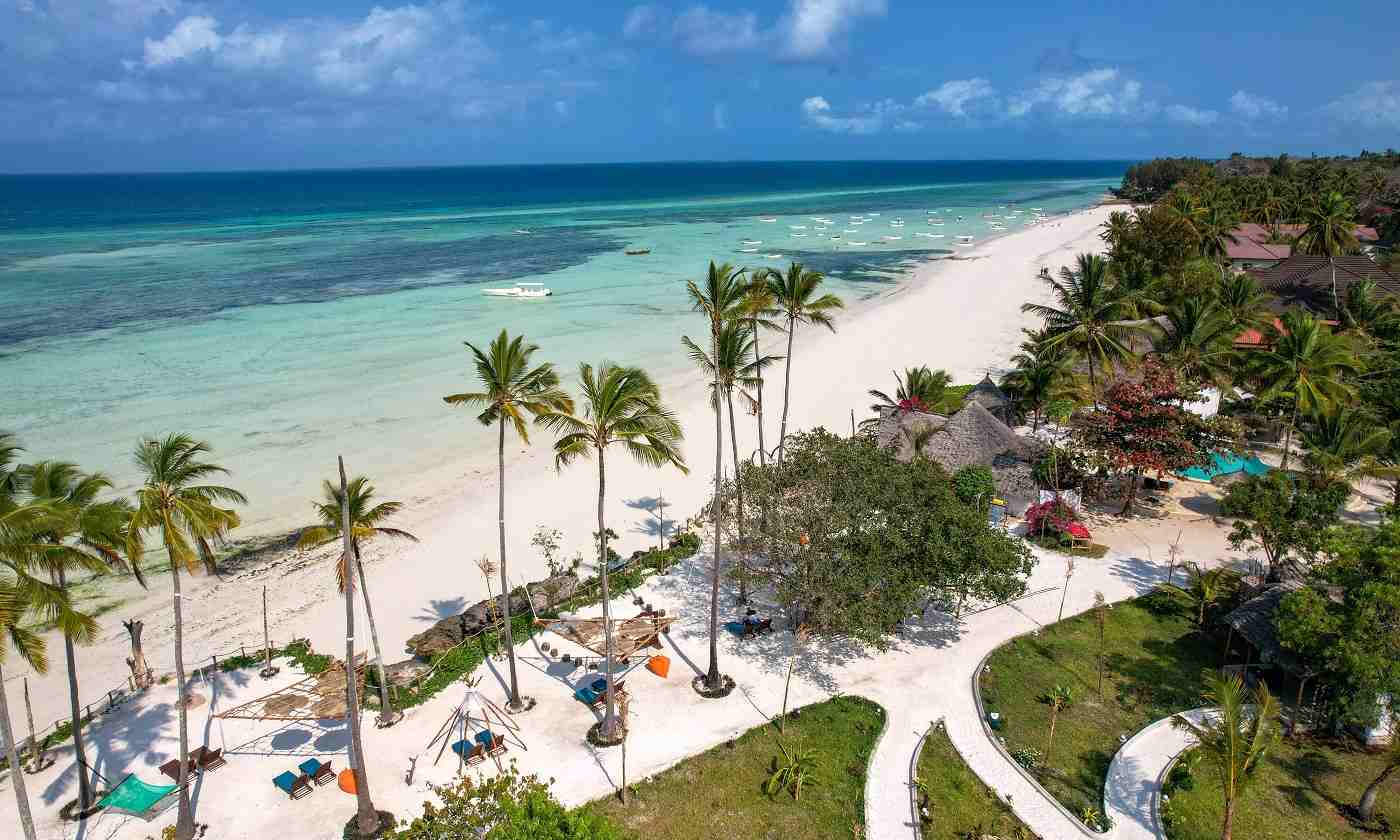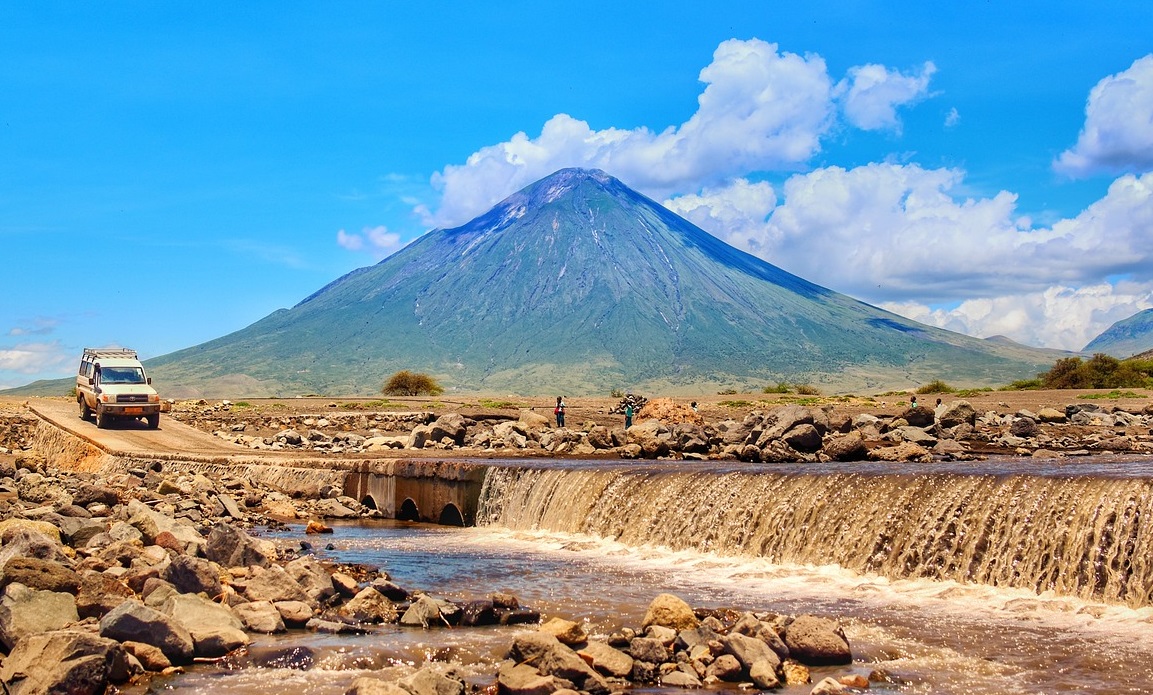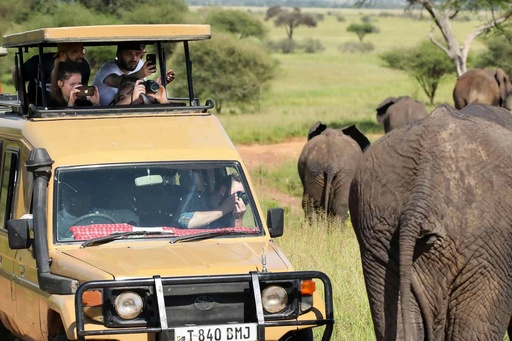Best Places to Visit in Tanzania
Tanzania, a country located on the coast is a captivating fusion of natural wonders. From the plains of the Serengeti, where you can witness the mesmerizing Great Migration, to Mount Kilimanjaro Africa's highest peak adorned in snowy splendor Tanzania beckons adventure seekers, nature enthusiasts, and those intrigued by diverse cultures. With its beaches kissed by the crystal waters of the Indian Ocean, the aromatic alleyways of Zanzibar Stone Town and the ancient marvel that is Ngorongoro Crater Tanzania invites exploration and discovery at every turn.
East Africa is a gem where you can have tranquil moments of rest as well as exciting activities. This amazing place whisks you away on a tour across its landscapes, which provide both peaceful retreats and exhilarating adventures. Anyone brave enough to take the journey will never forget discovering the breathtaking landscapes of East Africa. Here are a few handpicked recommendations of the destinations to discover in this East African country.
You May be Interested in: Best Time to Visit Tanzania
Mount Kilimanjaro
No trip to Tanzania would be complete without experiencing the mesmerizing beauty of Mount Kilimanjaro, the mountain on the continent standing at 5,895 meters (19,341 feet). While Tanzania national parks are primarily known for their wildlife visitors also have the opportunity to witness the sight of Mount Kilimanjaro in Mount Kilimanjaro National Park. This attracts individuals who are eager to take on the challenging climb to reach its summit. Although it is possible to ascend Mount Kilimanjaro at any time of the year many consider June through October as the months due, to the dry weather conditions.

Volcanic action along the Rift Valley created Kilimanjaro, a World Heritage Site, more than a million years ago. Mawenzi, Kibo, and Shira are three volcanic cones that formed roughly 750,000 years ago. One of the Seven Summits, Uhuru Peak on Kibo, is the highest peak.
The landscape of Kilimanjaro changes as you ascend from farmland at levels to rainforests and alpine meadows eventually leading to a lunar-like environment at the peaks. The rainforest slopes are home to diverse wildlife such, as buffaloes, leopards, monkeys, elephants, and eland. Bird enthusiasts will find plenty of birds of prey in the alpine zone.
National Parks of Tanzania
Tarangire National Park
Tarangire National Park is three hours drive from Arusha town. A sizable population of elephants lives in the southern part of the conservation area, and they travel inland to Lake Manyara and Tarangire, which are both under the rain shadow of Mount Ngorongoro. An intriguing aspect of Tanzania's natural character is illustrated by this pattern: the country contains natural corridors that permit elephants and other animals to travel freely between parks.
The park's enormous baobab trees, which may be hundreds or even thousands of years old, are another noteworthy feature. Mammals such as baboons and leopards frequently use the branches of these remarkable, stately trees.
Saanane National Park
Saanane Island has been recognized as a National Park since July 2013. It covers quite a small area of 2.18 sq km, but it is another beautiful location in Tanzania. To get there, you can take a short boat ride for about 5 minutes from the mainland in Mwanza. The boat rides are quite frequent, so you shouldn’t have trouble organizing one.
From picnicking to bird watching, rock hiking to sport fishing, there is something for everyone in this little gem. The fauna on this island is hugely varied – you can find animals such as velvet monkeys, zebras, wild cats, and rock hyraxes. The hiking trails around the island are also very impressive, with the rare rock formations standing out visually.
Serengeti National Park
Millions of animals live here or pass through the renowned Serengeti National Park, a wide plain devoid of trees, in quest of new meadows. Although the yearly wildebeest migration is what makes it most famous, you may also see the Big Five here, and the Serengeti is home to about 500 different kinds of birds.
Tens of thousands of visitors visit Tanzania's Serengeti National Park every year, which is the country's second-largest national park. In the Serengeti National Park, June through September are the best months to see wildlife. March through May is the wet season, and June through October is the coldest month.
Every year around May or early June, over 1.5 million wildebeest and hundreds of thousands of zebra and gazelle migrate. One of the most spectacular natural occurrences is this migration, which serves as the main attraction for many visitors.

Nyerere National Park
Drive the five hours from Dar es Salaam to Africa's largest reserve, Nyerere National Park. (Up until the final uneven section, the road is smooth; a 4WD vehicle is required.) Almost 31,000 sq km (11,970 sq miles) are home to vast herds of wildlife, including the Big Five and other antelope that are uncommon in other parks across the continent. Keep an eye out for sable, Lichtenstein's hartebeest, brindled gnu, and roan antelope.
In addition, Nyerere is home to the largest population of endangered African wild dogs in the world, whose frantic pace when hunting provides for an exciting game drive. An avid observer can also lose hours looking for birds in the forest and surrounding areas. The park is a photographer's paradise with its lush landscapes and the gorgeous Rufiji River flowing into oxbow lakes. Keep in mind that the majority of guests opt to take a one-hour charter flight to one of the park's several airstrips—an additional chance to shoot unique pictures.
NGORONGORO CONSERVATION AREA
The Ngorongoro Conservation Area, positioned between the Serengeti and Lake Manyara is a wildlife destination, in Tanzania. One of its features is the Ngorongoro Crater, which attracts a multitude of animals due to its consistent water supply. This unique characteristic leads them to choose to stay rather than embark on migration. At almost three million years old, the Ngorongoro Crater is the world's largest intact ancient caldera. Before its explosion and collapse, the Ngorongoro volcano stood as one of the tallest mountains on Earth.
Visitors are primarily drawn to this area for the opportunity to witness animals and indulge in bird watching. Inhabitants of the Ngorongoro Crater include species such as buffalos, lions, elephants, rhinos, Thomson's gazelles, and many more. Enough, wildebeests and zebras account for over half of the animal population, in this region. Excellent bird watching, particularly around Lake Migadi, which draws flamingo flocks to the shallows. Hippos are happy to bury themselves throughout the day and graze on the grass nearby after dusk.
Islands in Tanzania
Mafia Island
International divers and snorkelers flock to Mafia Island to explore the underwater environment, which is safeguarded by the Mafia Island Marine Park. While May through October offers the finest weather on Mafia Island, October through March is the best month for diving. April and March have a lot of rain.
There are coral gardens, a wide variety of fish, and a laid-back diving atmosphere in the stunning Mafia Island Marine Park. There are more than 400 species of fish and countless birds can be spotted in the region. Mafia Island serves as a conventional nesting location for the endangered green turtle.
Fishing in the sea, for large game fish such as sailfish, marlin, and tuna is a popular activity on Mafia Island. The island was initially settled by people in the ninth century. Gained importance between the twelfth and fourteenth centuries because of its advantageous position, along the trade routes of East Africa.
Zanzibar Island
Zanzibar, also known as Unguja is a vacation spot, in Tanzania renowned for its beaches. As part of the archipelago, which includes Pemba Island well this island boasts some of the most exquisite beaches worldwide. The waves differ depending, on which side of the island you're on. Tourists can expect to discover powdery white sand and crystal-clear shallow waters. Additionally, traditional boats beautifully adorn the coastline.
The island presents a range of accommodation options, including apartments that boast dining experiences, refreshing pools, and luxurious amenities. One of the choices is the established Emerald Zanzibar Resort & Spa, in Matemwe. With 250 suites, four restaurants, a beach a protected coral reef, and a stunning pool area it truly stands out. This remarkable resort is situated on Muyuni Beach.
In the heart of Zanzibar lies the city of Stone Town renowned for its port meandering streets and ancient Arabian mansions.

Pemba Island
The northernmost island in the Zanzibar archipelago is called Pemba Island. Numerous desert islands and some of the best scuba diving in the Indian Ocean, with unmatched clarity, can be found near Pemba. Within the underwater sanctuary are sea fans, colorful sponges, and coral gardens. Scuba divers frequently establish themselves in the main Pembacense city, Chake Chake.
Pemba has a more relaxed vibe than Zanzibar since it receives fewer tourists. Due to its steep terrain and deep valleys, the island has gained popularity among mountain bikers who are lured to its 1,000-meter peaks. Misali Island Beach is a place not to be missed, just offshore. On a deserted tropical island lies this amazing white sand beach.
In addition to being a significant global producer of cloves, Pemba is well-known for its juju practices in magic and medicine. From throughout East Africa, people travel to learn from traditional and voodoo doctors or to look for a cure.
Cities
Arusha City
Arusha, located in the landscapes of Tanzania is a captivating destination, for tourists. It offers a mix of safari adventures, cultural experiences, and breathtaking natural beauty. As the starting point for exploring African parks like Serengeti and Ngorongoro Crater, this city entices travelers with the prospect of thrilling wildlife encounters in its vast savannahs. But Arusha is not about safaris; it also boasts its treasures.
Arusha National Park presents a variety of terrains to explore while Mount Meru offers hikers and nature enthusiasts scenic trails and stunning views. The vibrant markets and cultural immersion opportunities allow visitors to delve into the heritage of the people. Moreover, Arusha provides a range of accommodation options and modern amenities to ensure every traveler's comfort. As a hub for adventure and cultural exploration, Arusha weaves together a tapestry that captures the essence of Tanzania's charm and natural wonders. Making it an irresistible destination, for tourists.
Stone Town
Stone Town, the heart of Zanzibar has remained relatively unchanged for the two centuries. What sets this city apart is the captivating presence of houses that line its narrow alleys and streets.
During Zanzibar's era, as a Swahili trading hub in the Indian Ocean most of the houses in Stone Town were built during the 19th century. These houses boast doors intricately adorned with brass leaving a lasting impression on visitors.
Today many of Stone Town landmarks have been restored to their glory making it the oldest continuously inhabited Swahili city worldwide. Some of these structures have been transformed into tourist attractions and museums. Additionally, there are old churches, within town that hold great historical significance.
Visitors who take a stroll, along Creek Road will come across the Stone Town area, where they can find landmarks such as Darajani Market, Beit el Amani, City Hall, and the Anglican Cathedral. Other highlights worth exploring include Forodhani Gardens, the Old Dispensary with its carved balconies Beit el Sahel (also known as the Peoples Palace) which used to be the residence of sultans the historic Hamamni Persian Baths dating back, to 1888 and lastly the Old Fort which stands as Stone Towns oldest structure.

DAR ES SALAAM
Dar, es Salaam, the hub of Tanzania stands out as a city bursting with cultural diversity stunning coastal beauty, and economic prosperity. Serving as the country's powerhouse this bustling metropolis thrives as a center of trade welcoming commerce through its busy port. The city's cosmopolitan nature blends ethnicities and influences evident in its thriving arts scene, fusion of flavors in cuisine, and the harmonious coexistence of historical landmarks alongside modern developments. Embracing its enchanting charm Dar es Salaam offers beaches, like Coco Beach for both locals and tourists to relax and enjoy the shores of the Indian Ocean.
Apart, from city life, the city also acts as a doorway to Tanzania's natural attractions. It enchants visitors with opportunities to explore wildlife reserves discover the beauty of Zanzibar islands and partake in expeditions. Dar, es Salaam with its growing infrastructure and vibrant atmosphere beautifully captures the essence of Tanzania. It offers a range of experiences that effortlessly blend tradition and progress amidst a backdrop of possibilities.
MBEYA
Nestled in the Southern Highlands of Tanzania Mbeya charms its visitors with its scenery, vibrant culture, and welcoming hospitality. Enveloped by rolling hills and the majestic Poroto Mountains this area beckons explorers to venture into its landscapes and discover hiking trails that showcase mesmerizing vistas of the surrounding wonders.
Beyond its charm, Mbeya embraces a mix of cultures allowing travelers to fully immerse themselves in the traditions of the Nyakyusa, Safwa, and Bena communities. The city itself is vibrant and alive, with markets that give a glimpse into local life and commerce. Known for its tea plantations and vibrant produce Mbeya is a hub where you can experience the farming heritage firsthand and savor brewed local teas. Whether you're seeking adventures or a peaceful retreat in a setting Mbeya offers an inviting and multifaceted destination, within Tanzania's captivating Southern Highlands.
BAGAMOYO
Bagamoyo, a town, in history and tranquility along the shores of Tanzania entices travelers with its charm. With its UNESCO World Heritage Site status Bagamoyo is a testament to its role in the African slave trade. The echoes of this past can still be felt through its landmarks like the Bagamoyo Old Fort and the haunting Kaole Ruins, which bridge the narratives of Swahili, Arab, and European influences. But Bagamoyo is more than a site; it also resonates with artistic energy. The Bagamoyo College of Arts showcases creativity and traditional expressions. Moreover, the serene beaches of Kunduchi and Kaole provide moments of peacefulness by the sea while also serving as gateways to Zanzibar's enchantment and nearby wildlife reserves, like Saadani National Park. With its blend of heritage, beauty, and cultural vibrancy Bagamoyo is an enthralling destination that encapsulates Tanzania's past and present.
Historical and Archeological sites
National Museum of Tanzania
The National Museum of Tanzania is situated in Dar, es Salaam. Plays a role in preserving and celebrating the diverse heritage of the country. When you step inside you embark on a journey through Tanzania's history encountering treasures from iconic sites like Olduvai Gorge. The museum also exhibits artifacts that trace the nation's development from time to the day.
Next to the exhibition, you'll find the House of Culture a platform that showcases contemporary Tanzanian arts. Here local talents are. Cultural events take place showcasing the country's vitality. Not away is the Village Museum, where traditional dwellings representing ethnic groups in Tanzania are recreated. This immersive experience provides a glimpse into their lives and customs. With displays and educational programs this museum complex acts as a treasure trove offering insights, into Tanzania's history, traditions, and cultural diversity.
Old Fort of Zanzibar
The Old Fort, a building steeped in history proudly stands amidst the winding streets of Stone Town, Zanzibar. It was constructed in the century by the rulers of Oman and served as a strong defense, against potential invasions and as a symbol of power along the Indian Ocean trade routes of the Swahili Coast.
Its walls made from rock, impressive towers, and authoritative presence represent centuries of Zanzibar's evolution witnessing the intermingling of cultures, colonial influences, and the island's significant role in trade. Originally built to protect against attacks this fort has transformed throughout its tumultuous history. Serving as a garrison, prison, and even a hub for the slave trade.
Today it breathes with vitality as a center that hosts events, traditional performances, and an active market within its ancient boundaries. Visitors can stroll through its courtyards adorned with stalls or explore its ramparts for breathtaking views of the cityscape while immersing themselves in exhibitions that tell Zanzibar's intricate story. The Old Fort remains a symbol of resilience, for the island; it bears witness to eras while embracing the vibrancy of present-day Zanzibar.

Olduvai Gorge
The conservation area also holds an attraction called the Olduvai Gorge. This significant archaeological site has unearthed fragments of skulls and bones providing insights, into early human history.
Situated along a series of fault lines the Olduvai Gorge is a site where years of erosion have exposed fossils and remnants from the days of humanity. Back in 1911, a German professor stumbled upon some fossilized bones while on a butterfly expedition in Olduvai Gorge. During expeditions, the Leakeys uncovered fragments of skulls an intact skull, and bones estimated to be 2 million years old. Additionally, tools and hunting weapons dating back 1 to 1.5 million years were also found within Olduvai Gorge.
Another remarkable discovery was made near Olduvai, at Laetoli; the footprints of a man, woman, and child. These findings alongside others to be mentioned, provide evidence supporting the theory that at least three hominid species inhabited this region over two million years ago.
Lake Tanganyika
The second-deepest lake in the world and the largest freshwater lake in Tanzania, Lake Tanganyika serves as the foundation for a sizable local fishing sector that stretches over Tanzania, Zambia, Burundi, and the Democratic Republic of the Congo. Expect a genuinely dreamy voyage across its seas when traveling aboard a dhow as the sun sets and gentle breezes carry you along.
You can spend a day scuba diving or visiting the fish market at the lakeside village of Kigoma; we suggest staying at the Lake Tanganyika Hotel, which is near the water. Additionally, Lupita Island offers opulent lodgings along with opportunities for swimming, snorkeling, kayaking, climbing, and fishing, all while encircled by the enormous lake.
Ol Doinyo Lengai
The "Mountain of God," sometimes referred to as Ol Doinyo Lengai, is a must-see location when traveling to Tanzania. It is well-known for its activity, which covers the surrounding area in black lava and produces an amazing spectacle. This unusual natrocarbonatite lava gives the landscape a unique touch. draws in both geology buffs and adventure seekers. Wonders notwithstanding, the Maasai people regard the mountain as a sacred site in their customs and spiritual beliefs, giving it cultural value.

Climbing Ol Doinyo Lengai is both challenging and rewarding. As you trek up you'll be rewarded with views of Lake Natron waters and even catch glimpses of the expansive Serengeti plains in the distance. The remote and untouched surroundings create a connection with nature's mesmerizing beauty making it an ideal choice, for those who crave unexplored path adventures while also seeking an understanding of Tanzania's geological marvels and indigenous cultures.




